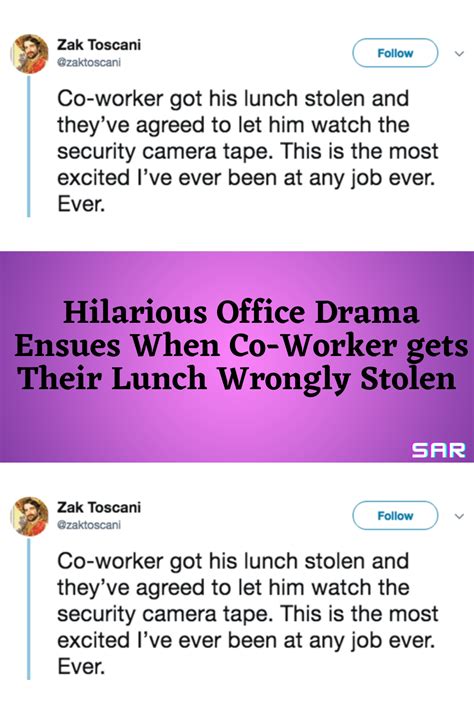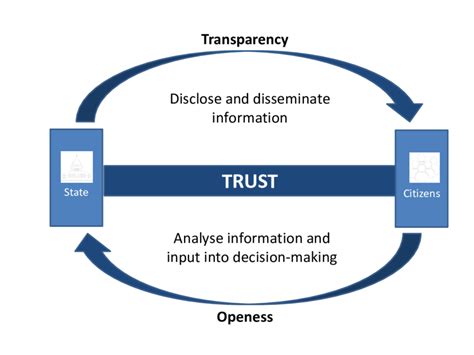
Costco’s iconic rotisserie chicken, often plagued by soggy bottoms, may have met its match with a redesigned container that aims to eliminate moisture buildup. The new packaging features strategically placed perforations designed to improve ventilation and reduce condensation, potentially resolving a long-standing consumer complaint about the popular, affordable meal option.
Costco rotisserie chicken enthusiasts have long contended with a persistent problem: the dreaded soggy bottom. This unfortunate side effect, caused by trapped condensation within the packaging, has detracted from the otherwise appealing qualities of the warehouse giant’s famously inexpensive and flavorful bird. However, a potential solution is on the horizon, as Costco has begun rolling out redesigned containers specifically engineered to combat this moisture issue.
The updated packaging incorporates strategically placed perforations, small holes that allow for enhanced airflow and ventilation. This increased airflow is intended to minimize the accumulation of condensation inside the container, thereby preserving the chicken’s crispy skin and overall texture. Social media platforms have buzzed with anticipation and cautious optimism as consumers report sightings of the new containers in select Costco locations.
“It appears the redesigned containers have started appearing in various Costco locations,” a Reddit user noted, sparking a flurry of comments and speculation within online communities dedicated to Costco aficionados.
The pervasive problem of soggy rotisserie chicken is rooted in the very nature of the product and its packaging. Immediately after roasting, the chickens are placed into sealed containers to maintain their temperature and prevent contamination. However, the residual heat from the chicken causes moisture to evaporate, leading to condensation inside the container. This trapped moisture inevitably settles at the bottom, resulting in the undesirable soggy texture that consumers have come to associate with take-out rotisserie chicken.
Costco’s commitment to addressing this issue reflects the company’s dedication to customer satisfaction and its understanding of the importance of even seemingly minor details in shaping the overall shopping experience. The rotisserie chicken has become a symbol of Costco’s value proposition, offering a convenient, affordable, and tasty meal option for busy families and individuals. Maintaining the quality of this iconic product is therefore crucial for preserving Costco’s reputation and customer loyalty.
The design of the new container represents a practical and potentially effective approach to mitigating the soggy bottom problem. By allowing for increased ventilation, the perforations facilitate the escape of moisture vapor, preventing it from condensing and accumulating within the container. The effectiveness of this design will ultimately depend on factors such as the size and placement of the perforations, the ambient temperature and humidity levels, and the duration of time the chicken remains in the container.
“Hopefully the new packaging will keep the chicken from steaming itself,” commented another Reddit user, capturing the collective hope of Costco rotisserie chicken fans.
While the redesigned container offers a promising solution, some consumers have expressed concerns about potential trade-offs. One concern is that the increased ventilation could lead to the chicken cooling down more quickly, potentially affecting its overall temperature and flavor. Another concern is that the perforations could compromise the container’s ability to protect the chicken from external contaminants.
Costco will likely monitor customer feedback closely as the new containers are rolled out to assess the effectiveness of the design and address any potential concerns. The company may also consider further refinements to the packaging based on consumer input and real-world performance data.
The implementation of the new rotisserie chicken container underscores Costco’s operational strategies in maintaining product quality and customer satisfaction. The rotisserie chicken is priced aggressively – at $4.99 – a consistent value that has contributed significantly to its popularity. This price point, despite rising operational and ingredient costs, positions the rotisserie chicken as a loss leader, strategically designed to attract customers into the warehouse where they are likely to make additional purchases. The perception of value is a critical component of Costco’s business model, and the rotisserie chicken plays a pivotal role in reinforcing this perception. Ensuring that the product meets customer expectations in terms of both price and quality is therefore paramount.
Costco’s attention to detail in addressing the soggy bottom issue demonstrates its commitment to continuous improvement and its willingness to invest in solutions that enhance the customer experience. The company has a long history of innovating in areas such as packaging, product sourcing, and store layout to optimize efficiency and deliver value to its members. This dedication to innovation is a key factor in Costco’s sustained success and its ability to maintain a loyal customer base.
The impact of the new container extends beyond just the individual consumer experience. The rotisserie chicken is a significant revenue driver for Costco, and any improvements in product quality can have a positive impact on sales. Moreover, reducing food waste is an increasingly important consideration for both consumers and retailers. By minimizing the soggy bottom issue, the new container could potentially reduce the amount of rotisserie chicken that is discarded due to undesirable texture, contributing to Costco’s sustainability efforts.
The introduction of the new rotisserie chicken container is a testament to the power of customer feedback and the importance of addressing even seemingly minor product imperfections. In today’s competitive retail landscape, where consumers have a multitude of choices, companies must constantly strive to improve their products and services to maintain a competitive edge. Costco’s proactive approach to addressing the soggy bottom issue demonstrates its commitment to listening to its customers and delivering a consistently high-quality experience.
The Costco rotisserie chicken has transcended its status as a simple grocery item to become a cultural phenomenon. Its affordability, convenience, and consistent quality have made it a staple in households across the country. The introduction of the new container is a small but significant step in preserving the integrity of this iconic product and ensuring that it continues to delight Costco members for years to come. The cultural significance of the rotisserie chicken cannot be understated; it often features in social media posts, cooking blogs, and even humorous memes, demonstrating its widespread appeal and cultural relevance.
Furthermore, the evolution of the rotisserie chicken container highlights broader trends in the food packaging industry. There is an increasing emphasis on developing packaging solutions that not only protect food from spoilage and contamination but also enhance its quality and appeal. This includes innovations such as modified atmosphere packaging, which extends shelf life by controlling the levels of oxygen and carbon dioxide within the package, and active packaging, which incorporates antimicrobial agents to inhibit the growth of bacteria.
Costco’s update also shows a response to environmental concerns. Although the article does not delve into the recyclability of the new containers, there is an industry-wide move towards more sustainable packaging solutions. This includes using recycled materials, reducing the amount of packaging used, and designing packaging that is easily recyclable or compostable. Consumers are increasingly conscious of the environmental impact of their purchasing decisions, and retailers are responding by adopting more sustainable packaging practices.
The success of the new rotisserie chicken container will depend on a variety of factors, including its effectiveness in reducing moisture buildup, its impact on the chicken’s temperature and flavor, and its overall cost-effectiveness. Costco will likely conduct extensive testing and gather customer feedback to assess the performance of the new container and make any necessary adjustments. The company may also consider offering different types of containers for different regions or climates, depending on the specific needs of its customers.
Ultimately, the introduction of the new rotisserie chicken container is a positive development for Costco members and a testament to the company’s commitment to quality and customer satisfaction. By addressing the long-standing soggy bottom issue, Costco is not only enhancing the consumer experience but also reinforcing its reputation as a retailer that cares about the details. This attention to detail is what sets Costco apart from its competitors and contributes to its enduring success. The new containers could also pave the way for similar innovations in other areas of Costco’s food offerings, leading to further improvements in product quality and customer satisfaction. The ripple effect of this change could positively influence Costco’s brand image and customer loyalty.
The saga of Costco’s rotisserie chicken container also provides a valuable lesson in the importance of supply chain management. Ensuring that the new containers are readily available at all Costco locations requires careful coordination and planning across the entire supply chain, from manufacturing to distribution. Costco’s ability to effectively manage its supply chain is a key factor in its success and its ability to deliver consistent value to its members.
The attention garnered by the rotisserie chicken container is indicative of the strong connection that many consumers feel with the Costco brand. Costco has cultivated a loyal following by offering a unique shopping experience, characterized by low prices, high-quality products, and a treasure hunt atmosphere. The rotisserie chicken is just one example of the many products that contribute to this unique shopping experience. Costco’s ability to maintain this strong brand connection is essential for its continued success in the increasingly competitive retail landscape.
Moreover, the story of the soggy bottomed chicken is illustrative of the challenges in mass production and distribution. Maintaining the quality of a product that is produced and sold in such high volumes requires careful attention to detail and a commitment to continuous improvement. Costco’s willingness to invest in a solution to the soggy bottom issue demonstrates its dedication to overcoming these challenges and delivering a consistently high-quality product to its members.
The launch of the new container can also be viewed as a form of risk management. By proactively addressing a known product imperfection, Costco is mitigating the risk of negative publicity and potential damage to its brand reputation. In today’s age of social media, where consumer opinions can spread rapidly, it is more important than ever for companies to be proactive in addressing customer concerns.
In conclusion, the introduction of Costco’s redesigned rotisserie chicken container represents a significant step forward in addressing a long-standing consumer complaint and enhancing the overall shopping experience. By incorporating strategically placed perforations to improve ventilation and reduce condensation, Costco is demonstrating its commitment to quality, customer satisfaction, and continuous improvement. While the success of the new container will ultimately depend on real-world performance and customer feedback, it offers a promising solution to the dreaded soggy bottom and reinforces Costco’s position as a leader in the retail industry. This change highlights Costco’s commitment to upholding their promise of value and quality. It serves as a case study in how consumer feedback can drive meaningful change and innovation within a large organization.
Frequently Asked Questions (FAQs) about Costco’s Rotisserie Chicken Container Redesign:
1. What is the main problem the new Costco rotisserie chicken container is trying to solve?
The primary issue is the “soggy bottom” phenomenon, where condensation builds up inside the container, making the chicken skin at the bottom lose its crispness and become unappetizing. The redesigned container aims to reduce this moisture buildup.
2. How does the new container design prevent the chicken from getting soggy?
The new container features strategically placed perforations (small holes) that allow for increased airflow and ventilation. This helps to release moisture vapor and prevent it from condensing inside the container, preserving the chicken’s crispy skin.
3. Are the new rotisserie chicken containers available at all Costco locations?
The rollout of the new containers appears to be gradual, with reports of them appearing in select Costco locations. It’s not yet clear if or when all locations will have the redesigned packaging.
4. Could the new container design affect the chicken’s temperature or allow contamination?
Some consumers have expressed concerns that the increased ventilation could cause the chicken to cool down faster or potentially compromise the container’s ability to protect the chicken from external contaminants. Costco will likely monitor these factors.
5. What is Costco’s motivation for redesigning the rotisserie chicken container?
Costco’s motivation is rooted in customer satisfaction and maintaining the quality of its iconic rotisserie chicken, which is a popular and affordable meal option. Addressing the “soggy bottom” issue enhances the overall consumer experience and reinforces Costco’s reputation for value and quality.
Expanded Analysis
The Costco rotisserie chicken’s journey from the roasting oven to the consumer’s table is a complex process, fraught with challenges that belie its seemingly simple appeal. The introduction of the redesigned container is not just a superficial change but rather a culmination of considerations related to food science, engineering, consumer psychology, and supply chain logistics.
The Science of Soggy Chicken
The phenomenon of the soggy bottom is fundamentally a matter of physics and thermodynamics. When the freshly roasted chicken, still radiating heat, is placed inside a sealed container, the moisture naturally present within the chicken begins to evaporate. This warm, moist air then comes into contact with the relatively cooler surfaces of the container, causing the water vapor to condense back into liquid form. Gravity dictates that this condensation accumulates at the bottom of the container, directly underneath the chicken, leading to the dreaded soggy texture.
The degree to which this occurs is influenced by several factors, including:
- The chicken’s internal temperature: A hotter chicken will release more moisture.
- Ambient temperature: Cooler surroundings will accelerate condensation.
- Humidity levels: Higher humidity in the surrounding environment can exacerbate the issue.
- Container material: Different materials have varying thermal properties, affecting the rate of condensation.
- Container seal: A tighter seal will trap more moisture, while a looser seal may allow for some evaporation but also increase the risk of contamination.
Engineering a Solution
The challenge for Costco’s packaging engineers was to design a container that could mitigate the soggy bottom problem without compromising other critical factors, such as:
- Food safety: The container must protect the chicken from contamination and maintain its temperature within safe limits.
- Structural integrity: The container must be sturdy enough to withstand handling and transportation without collapsing or leaking.
- Cost-effectiveness: The container must be affordable to manufacture and transport in large quantities.
- Sustainability: The container should ideally be made from recyclable or compostable materials.
The decision to incorporate perforations represents a calculated compromise. While the perforations allow for increased ventilation and reduce condensation, they also introduce potential risks, such as:
- Faster cooling: The increased airflow could cause the chicken to cool down more quickly, potentially affecting its flavor and texture.
- Reduced shelf life: The increased airflow could accelerate spoilage, shortening the chicken’s shelf life.
- Increased contamination risk: The perforations could allow for the entry of contaminants, such as dust, insects, or bacteria.
To mitigate these risks, Costco’s engineers likely conducted extensive testing to determine the optimal size, number, and placement of the perforations. They may have also considered factors such as the container material, the type of seal used, and the recommended storage conditions.
Consumer Psychology and the Costco Brand
The Costco rotisserie chicken is more than just a convenient meal option; it’s a symbol of the Costco brand and its commitment to value and quality. The chicken is priced aggressively at $4.99, a price point that has remained remarkably consistent over time, despite rising costs of ingredients and labor. This low price, combined with the chicken’s consistent quality and flavor, has made it a beloved item among Costco members.
The soggy bottom issue, while seemingly minor, has the potential to erode consumer trust in the Costco brand. If customers consistently encounter soggy chicken, they may begin to question the overall quality of Costco’s products and services. This could lead to decreased customer loyalty and potentially even a decline in sales.
By proactively addressing the soggy bottom issue, Costco is demonstrating its commitment to listening to its customers and delivering a consistently high-quality experience. This attention to detail reinforces Costco’s brand image as a company that cares about its customers and is willing to go the extra mile to meet their needs.
Supply Chain Logistics
The successful implementation of the redesigned container requires careful coordination across Costco’s vast supply chain. This includes:
- Sourcing materials: Ensuring a reliable supply of the new container material.
- Manufacturing: Producing the containers in sufficient quantities to meet demand.
- Distribution: Transporting the containers to Costco warehouses across the country.
- Inventory management: Ensuring that warehouses have an adequate supply of both the old and new containers during the transition period.
- Training: Educating Costco employees on the proper handling and storage of the new containers.
Any disruption in the supply chain could delay the rollout of the new containers and potentially lead to shortages or inconsistencies. Costco’s ability to effectively manage its supply chain is therefore crucial for the success of this initiative.
Sustainability Considerations
In today’s increasingly environmentally conscious world, sustainability is an important consideration for any packaging design. While the article doesn’t explicitly address the sustainability of the new container, it’s likely that Costco took this factor into account.
Potential sustainability improvements could include:
- Using recycled materials: Manufacturing the container from recycled plastic or paper.
- Reducing the amount of material used: Optimizing the container’s design to minimize the amount of material required.
- Designing for recyclability: Ensuring that the container is easily recyclable in most communities.
- Exploring compostable options: Investigating the feasibility of using compostable materials for the container.
By adopting more sustainable packaging practices, Costco can reduce its environmental footprint and appeal to environmentally conscious consumers.
The Broader Context of Food Packaging Innovation
The redesign of the Costco rotisserie chicken container is just one example of the ongoing innovation in the food packaging industry. Driven by factors such as food safety concerns, consumer demand for convenience, and increasing environmental awareness, companies are constantly developing new and improved packaging solutions.
Some key trends in food packaging innovation include:
- Active packaging: Packaging that interacts with the food to extend shelf life or improve quality. Examples include packaging that releases antimicrobial agents or absorbs oxygen.
- Intelligent packaging: Packaging that provides information about the food, such as its temperature, freshness, or origin. Examples include packaging with sensors that change color when the food is spoiled or QR codes that link to information about the product.
- Modified atmosphere packaging (MAP): Packaging that controls the levels of gases inside the package to extend shelf life. This is commonly used for fresh produce, meat, and poultry.
- Sustainable packaging: Packaging that is made from recycled materials, is biodegradable, or reduces waste.
These innovations are transforming the way food is packaged, transported, and consumed, and are playing an increasingly important role in the food industry.
Future Considerations
While the redesigned container represents a significant improvement, it’s likely that Costco will continue to refine its packaging in the future. Potential areas for further improvement include:
- Optimizing the perforation design: Conducting further testing to determine the optimal size, number, and placement of the perforations for different climates and storage conditions.
- Exploring new materials: Investigating alternative materials that offer better thermal properties, improved sustainability, or enhanced food safety.
- Developing a dynamic packaging system: Creating a container that can adjust its ventilation based on the temperature and humidity levels.
- Incorporating consumer feedback: Soliciting feedback from Costco members to identify areas for improvement.
By continuing to innovate and adapt, Costco can ensure that its rotisserie chicken remains a beloved and high-quality product for years to come.
The entire redesign process shows that even the simplest items in grocery shopping involve complex scientific and consumer-based decisions. Costco’s dedication to addressing a common consumer complaint reflects their wider business strategy of offering quality products at competitive prices and creating customer loyalty. The ripple effects of this packaging change, from supply chain management to consumer perception, underscore the significant impact that seemingly minor improvements can have on a large organization. By addressing the “soggy bottom” issue, Costco not only enhances the consumer experience but also reinforces its position as an innovative and customer-centric retailer, setting a high standard for quality and value within the industry. As consumer preferences continue to evolve, Costco’s proactive approach to addressing customer concerns positions them favorably for sustained success in the ever-changing retail landscape.









